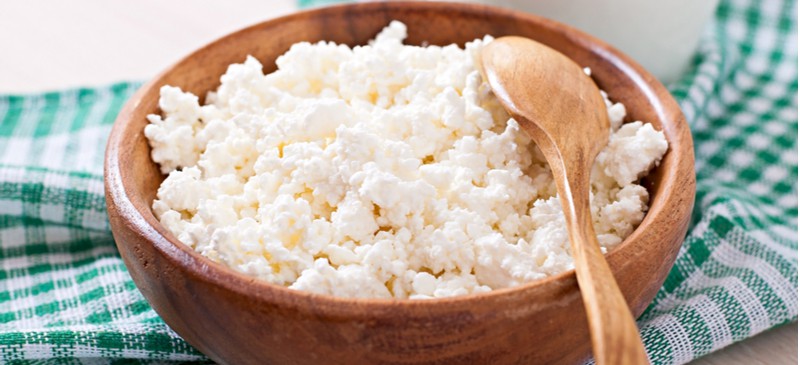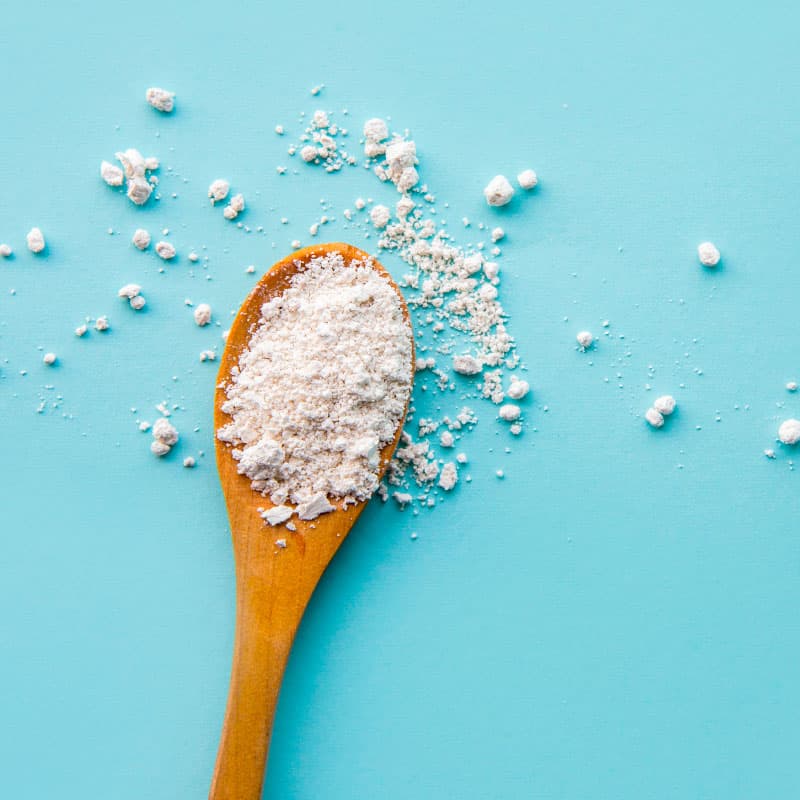This Dr. Axe content is medically reviewed or fact checked to ensure factually accurate information.
With strict editorial sourcing guidelines, we only link to academic research institutions, reputable media sites and, when research is available, medically peer-reviewed studies. Note that the numbers in parentheses (1, 2, etc.) are clickable links to these studies.
The information in our articles is NOT intended to replace a one-on-one relationship with a qualified health care professional and is not intended as medical advice.
This article is based on scientific evidence, written by experts and fact checked by our trained editorial staff. Note that the numbers in parentheses (1, 2, etc.) are clickable links to medically peer-reviewed studies.
Our team includes licensed nutritionists and dietitians, certified health education specialists, as well as certified strength and conditioning specialists, personal trainers and corrective exercise specialists. Our team aims to be not only thorough with its research, but also objective and unbiased.
The information in our articles is NOT intended to replace a one-on-one relationship with a qualified health care professional and is not intended as medical advice.
What Is Quark Cheese? Nutrition, Benefits & How to Make It
June 30, 2020

If you’re an experienced baker or cook — especially if you like to make high-protein, meatless meals — chances are you’ve come across quark cheese.
What is quark? It’s a creamy, unaged cheese that’s similar in texture and appearance to yogurt, creme fraiche and cottage cheese.
Much like these more well-known dairy products, you can use quark in dips, baked goods or simply spread on toast. It’s a good way to add extra protein, creaminess and a bit of “tang” to lots of different recipes, all without adding lots of sugar, salt or carbs.
What Is Quark?
Quark is a creamy, fresh, soured (or “acid set”) cheese made by combining milk with lactic acid, a type of bacteria that causes the whey in milk to separate from the curd.
What does quark taste like? The presence of lactic acid gives quark a subtle sour taste, much like yogurt. Most people find that it has a mild taste, neither too sweet or tart.
Its texture depends on exactly on how it’s made and strained but usually resembles a rich, thick yogurt.
Although quark has only recently become more popular and widely available in the U.S., it has a relatively long history dating back to the 14th century in Central Europe and the Scandinavian region. Since its creation, it’s been consumed most in countries, including Germany, Denmark, Norway, Poland, Russia and Austria.
Quark is the German word for “fresh curd.” (In fact, some refer to it as “Germany’s Greek yogurt.”)
While quark has become the English name for this European-style cheese, around the world it goes by several different names, such as:
- twaróg
- quarg
- dry curd cheese
- farmer’s cheese
- pot cheese
While it’s almost always creamy and somewhat tart, there are many types of quark cheeses uses in different cuisines, each with its own method of preparation and straining that affects the finished product.
Nutrition Facts
Quark cheese is made with just a few basic ingredients: cultured milk (usually pasteurized), salt and enzymes.
Just like some other healthy cheeses, quark is low in sugar and carbs but high in protein and also a source of healthy fats. Compared to some other cheeses, it’s relatively low in calories and can have a bit less fat depending on the type of milk it’s made with.
Quark also typically has less salt than other cheeses, including cottage cheese. Unlike some aged cheeses that are made with rennet (enzymes produced in the stomachs of ruminant mammals), quark contains no rennet and therefore is a preferred choice among vegetarians.
One of the best things about quark is the presence of beneficial probiotic bacteria, which are found in a variety of fermented foods and support digestion. Quark is made from soured milk fermented with mesophilic Lactococcus starter cultures, lending it some added benefits over non-fermented cheeses.
One 150-gram serving (a little more than 1/2 cup) of plain, grass-fed quark contains about:
- 140 calories
- 4 grams carbohydrates
- 16 grams protein
- 6 grams fat
- 150 milligrams calcium (10 percent DV)
- 200 milligrams potassium (6 percent DV)
Benefits/Uses
What is quark cheese used for? Here are some of the benefits associated with this type of cheese:
1. High in Protein
Because it has a high ratio of protein compared to carbs and fat, quark makes a filling addition to a variety of recipes, including healthy breakfasts and desserts. Protein foods are important for keeping you full, providing your muscles and brain with energy, repairing connective tissue, and much more.
2. Good Source of Calcium and Potassium
Dairy products, including soft cheeses, are some of the best sources of calcium, which is an essential mineral that’s needed to keep your bones strong, support heart and dental health, and many other functions.
In addition to calcium, quark made with whole milk also provides some potassium, vitamin A, B vitamins like B6 and B12, and a bit of phosphorus and vitamin D.
3. Contains Beneficial Probiotic Bacteria
Quark is made via the process of fermentation, wherein milk sugars are converted into lactic acid bacteria/cultures. This not only helps thicken the milk and give the finished product its tart but pleasant taste, but also provides you with benefits for gut health.
Healthy live cultures found in fermented dairy products can help to replenish your gut with “friendly bacteria” that have benefits such as supporting nutrient absorption, immune function and even appetite control.
4. Low in Sugar, Salt and Carbs
As mentioned above, quark is low in sugar, carbs and salt, so it’s a food that can be enjoyed by people following many different diets — including the keto diet (in small to moderate amounts), high-protein diets, a low-sodium diet, the DASH or MIND diet, and others.
Quark can also serve as a substitute for cottage cheese if you follow the Budwig diet, a protocol used to support the immune system and help prevent chronic diseases due to its anti-inflammatory effects.
How to Use It
Where can I find quark cheese? In the U.S. it’s now becoming more widely available in big supermarkets and online grocery shops.
You can also look for it in German delis, European bakeries and natural/health food stores, as well as speciality cheese shops and some farmers markets.
Are quark and cream cheese basically the same? It’s similar to old-fashioned cream cheese, since it’s a slightly drained fresh cheese. However, it’s creamier and a bit more tart than most commercial cream cheeses sold today.
How should you use quark at home? It’s great in both sweet and savory recipes and works as a healthy baking substitute for more calorie-dense products like heavy cream/sour cream, plus it’s higher in protein too.
Basically in any recipe that calls for dairy staples like cream cheese, yogurt or cottage cheese you can sub in quark instead. Here are some recipes to add it to:
- cheesecakes and mouses
- dips and dressings
- mashed potatoes
- strudels, cakes, banana and other baked goods
- pancakes and waffles
- granola parfaits with fresh berries or other fruits
- omelets, quiches and frittatas
- curries and creamy soups/stews
- smoothies
Recipes
Interested in making your own quark cheese? Quark can be made with just two simple ingredients within just several days.
Here’s a basic recipe for homemade quark:
- You’ll need to sour the milk using live bacteria culture. Quark is made with the same bacteria/enzymes (“live cultures”) found in buttermilk that is unpasteurized (this is important). If you can’t find unpasteurized buttermilk, you can use freeze-dried bacterial culture called mesophilic culture. Look for mesophilic culture in health food stores, cheesemaking and winemaking speciality shops, or online.
- Add about two cups of whole milk or 2% milk to a clean pot and bring it to a simmer on the stove (2% milk has been traditionally used in places such as Germany). Let it come to room temperature and then whisk in either 1/2 cup of unpasteurized buttermilk or about 1/2 teaspoon of dried culture (read the directions, since the amount depends on the product).
- Let it sit overnight at room temperature until it thickens to a yogurt-like consistency. Then strain it overnight in a cheesecloth. (Optional: You may want to add rennet to help thicken the cheese.)
- You can chill your cheese before eating if you’d like or let it chill in the refrigerator.
- It will keep fresh for about two weeks in the refrigerator.
If you’re new to using quark when you cook or bake, give these quark recipes a try:
- Coconut Chia Seed Smoothie Bowl
- Crustless Spinach Quiche
- Lemon Blueberry Quark Cake
- Greek Dip with Quark
What is a substitute for quark cheese?
If you can’t find it or don’t have any on hand, yogurt, mascarpone, sour cream, fromage blanc, Indian paneer or cottage cheese make good quark substitutes.
Risks and Side Effects
Quark cheese is made with dairy milk, so it might not be well-tolerated by people with lactose intolerance or dairy allergies. If you find that eating it causes symptoms like bloating, gas and diarrhea, consider cutting it out of your diet.
That said, because it contains healthy probiotic bacteria it may be easier to digest than other dairy products. Chances are if you can tolerate yogurt, then you should be able to eat quark too.
Some brands can be high in sugar if they are flavored and sweetened, so to keep calories and sugar in check, opt for plain quark. (Full-fat cheese made with whole milk provides the most fat-soluble vitamins, plus it usually tastes best.)
For even more health benefits, try making homemade cheese with raw milk, which is full of vitamins, minerals and healthy enzymes.
Conclusion
- What is quark? It’s a creamy, fresh, soured cheese that is similar to yogurt and cottage cheese. It’s made by combining milk with lactic acid, giving it a slight sour taste.
- Quark cheese is high in protein and relatively low in sugar (when unsweetened), carbs, salt and fat. It’s a good source of calcium, potassium and also has several other nutrients.
- Unlike aged cheeses it’s not made with rennet, so it’s favored by vegetarians. It’s also a good choice for people following low-carb, DASH and low-sodium diets.
- Use quark in both sweet and savory recipes, just like you would yogurt or creme fraiche. Try it in baked goods like cakes and strudels, topped with granola, in omelets, pancakes and more.






